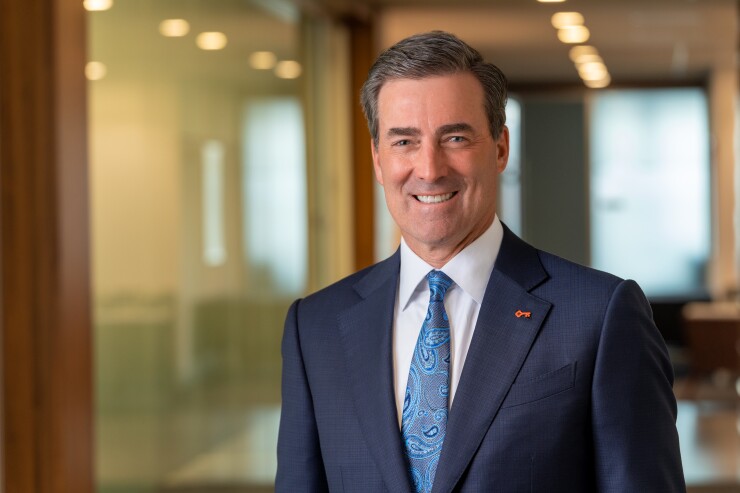Caution lights are flashing at Cleveland-based
The $189.8 billion-asset

As things stand, the provision boosted Key's allowance for credit losses to $1.6 billion, or 1.31% of period-end loans. That is up from 1.15% of period-end loans on Sept. 30.
Economic headwinds in the form of slowing gross domestic product growth and a marked decline in housing prices prompted Key to take up a defensive posture.
The reserve build reflects "a more cautious economic outlook," Chief Financial Officer Don Kimble said Thursday on a conference call with investment analysts.
"Our base case is that there will be a mild recession," Chairman and CEO Chris Gorman said on the same call.
Key is
Even in a recessionary context "it still seems like a very large reserve build," Brian Foran, who covers Key for Autonomous Research, wrote Thursday in a research note. Key's $265 million provision amounts to nearly 650% of fourth-quarter net charge-offs. By contrast, the $2.3 billion provision JPMorgan Chase reported Friday works out to 259% of its fourth-quarter charge-offs.
Aside from its king-size provision, the other major headwind for Key came in the capital markets space. Investment banking and debt placement fees totaled $172 million for the fourth quarter, a $151 million decline from the same period in 2021. Gorman expressed hope "the big-pent up backlog will start to clear out in the second half" of the year, but said the first six months of 2023 would be "challenging."
"The new-issue equity market is virtually nonexistent and the [merger-and-acquisition] market continues to be engaged in price discovery," Gorman said. Though Key's pipelines remain solid, particularly in M&A, "the pull-through rates continue to be adversely impacted by market uncertainty," Gorman added.
A month after the National Community Reinvestment Coalition blasted KeyBank's mortgage lending record to Black borrowers, the group said it will send letters to the Federal Reserve and OCC about its findings.
For 2023, Key is forecasting loan growth of 6% to 9%, while deposits stay relatively flat. The company expects a slight decline in noninterest income, with expenses in line with 2022 levels. Net charge-offs are expected to reach 25 to 30 basis points of average total loans, well below the target range of 40 to 60 basis points.
Key reported its cost of interest-bearing deposits jumped 49 basis points on a linked-quarter basis, largely offsetting the positive effects of loan growth and higher rates. Indeed, the net interest margin actually decreased by one basis point from the bank's Sept. 30 level to 2.73%.
According to Gorman, the spike in deposit costs came late in the quarter as commercial and private banking clients shifted cash into interest-bearing accounts. The movement was more aggressive than Key expected and more expensive, since a substantial portion of the funding went into time deposits. Key had been expecting reliance on lower-cost money-market accounts.
"Customer behavior is really hard to model," Gorman said. "This has been the steepest rate of [interest rate] increases in the Fed's history, and I think some of the conventional curves are sort of out the window."






